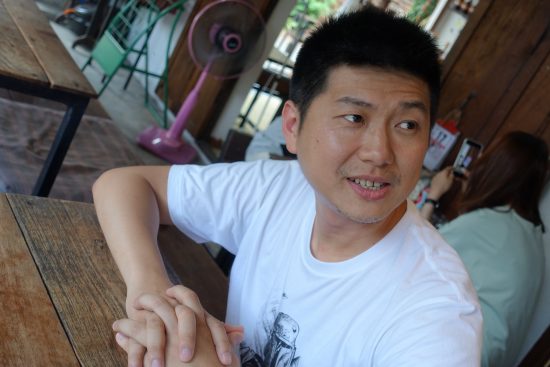
Douglas Crets, Communications Master
Douglas is the English Master in Communication. A passionate marketing strategist and content writer, he spent three years with Microsoft in Silicon Valley managing the global social media marketing strategy for BizSpark, Microsoft’s Azure and software program for entrepreneurs. Douglas has a deep love for technology, literature and travel. He holds a Masters in Fine Arts from Syracuse University and a Masters in Journalism from the University of Hong Kong. One day, he hopes to travel around the world for a year.
First attempts at startup products usually fall short. This can be really frustrating, but early-stage founders don’t often realize that these false starts are real opportunities.
Why? When founders give this product to new users, they are trying to help a new customer fare better than those “normal” people who do things in what founders consider the “old way.”
Most people using a new feature or a product for the first time are used to doing business, or experiencing something in what they consider the normal way. They are not like the founder, who has dreamed up a vision of how things should be done. When a founder gives this new product to a potential customer, he or she is trying to do three things:
- Sell the product!
- Integrate this new vision into the customer’s reality.
- Solve a problem that often a potential customer didn’t even know they had.
This new approach takes time to understand and appreciate. It’s almost like taking someone and plopping them down in a new culture, or in a different era somewhere far into the future. By giving these potential customers something very new, they will approach it with some skepticism, some doubt, and some reasons why it won’t work.
As a result, it’s inevitable that a first trial will end in incremental data and not much customer acquisition.
But this new confrontation with tech is a chance to seek feedback. This feedback creates a cycle of improvement. This is why founders who struggle with their own problem first usually have a better chance of finding product-market fit.
I will tell you a story about a founder who went through the AppWorks Accelerator and launched his own product successfully to demonstrate this point.
The park
It was a spring day in Taipei around the year 2011 and then-Googler Andy Cheng was looking for a house to buy. Married and with a young son, Andy wanted a property his family could grow into. A real estate agent showed him a house in a desirable neighborhood. A stretch of park just behind the house meant this was exactly what he was looking for.
Andy nearly made an offer. Then he found out that the park was slated for school construction. Rushing to close, the broker hid this from Andy. The seed of an idea was planted in Andy’s mind.
“I thought, ‘Man, what else have you not told me,’” says Andy, as he looked back at how he developed foundi (AppWorks #8), a real estate listing platform.
The first thought Andy had had when he set to work was not: How could he solve the problem of a culture of manipulation and secrecy that seemed endemic to real estate brokers?
He only sees that his startup could make an impact in that area in retrospect. Like many founders, Andy’s MVP alone didn’t help the real end user — at the time, house buyers — but it started a process that eventually got him there. And this is really important for early founders to understand.
A new product alone is never enough to create scale and customer growth. You have to do a whole lot of digging to get there.
How it all started
From Andy’s perspective, there were so many houses to choose from, so wouldn’t trust and honesty be the winning factor for an agent closing a contract?
Andy learned that relatively low-paid real estate agents live off of commission, and in doing so, they often worked in ferocious competition against each other, even in the same agencies. In contract bidding — even before negotiations — the potential future sale of a home often goes to the agent that creates the most perfect too good to be true contract. House sellers want a good return, so agents will find ways to make their pitch of the future contract as lucrative as possible.
It doesn’t matter if the price is true, or if it accurately reflects the true conditions of the house. It’s every man for himself.
It gets worse!
Since every agent is motivated by commission, agents who are first to find the listing will also try to hide the listing info from other agents, making it nearly impossible for other agents to pitch a contract.
This unethical weirdness became more than an engineering puzzle for Andy, who was quite proficient with software programming and maps. Previously, he had worked as one of Google’s first hires in Taiwan, managing a team of engineers in the maps division. Code and problem-solving are in his wheelhouse. “I always go to the computer to code, to figure things out,” he says. But to tackle this problem, he had to go beyond the screen.
He created an early version of foundi. House sellers and buyers would use that version to find information about listings. But they took this info back to agents and used it to try to haggle better deals. This put burdens on the buyers of houses, though; this was exactly the position Andy was in before and didn’t want.
The founder becomes the warlord
He booked meetings with influential agencies and set up face-to-face consultations. He discovered that real estate agents were typically not the best performers in school. They are also technology-averse. It explained a lot.
With the right technology, they wouldn’t have had to be dishonest to compete. By sitting down and walking through foundi features with early adopter agents, Andy finally got to a point where he was able to convince more of them to use the product.
Like an arms dealer selling his weapons to different cartels, Andy started to spread his tool to different agencies. Whereas previously agents in the same agencies would be pitted against each other, teams began to perform at a higher level. Other agencies saw agencies doing better, and wanted the same tool.
“I felt like I was a warlord,” Andy jokes.
Has he made the market more transparent? It’s hard to say this early in the game. But according to Andy, this counterintuitive outcome holds promise.
By taking away the old things that made agents competitive — their secrecy and manipulation — he has actually made real estate agents more competitive. Therein lies a fundamental concept of startup building, and the core reason why data drives product development. Early-stage founders might take note of this technique.
Now, Andy’s customers number about 12,000 agents of the total 40,000 in Taiwan, who rely on foundi to serve their customers better and in turn maximize their income. Andy takes a long-term approach to this door-to-door sales effort.
Creating new tech to solve real problems is really the experience of giving people new mental models to live a better life. If a founder has a good head on his shoulders, and is passionate about what he’s doing, he will eventually build something that people need, in a market people didn’t know could exist. No newly launched product can do this immediately. It’s always a process, and it involves founders stepping away from the computer and even leaving the building, to get it right.
Answers, and your product, exist in people’s heads and hearts, whether they know it or not. As a founder, you are quite simply the enabler that will help them experience that by delivering a tangible good that unlocks a mental model. Think of it as a game, with a constant state of going on side quests. Without those quests, you cannot complete the journey.


